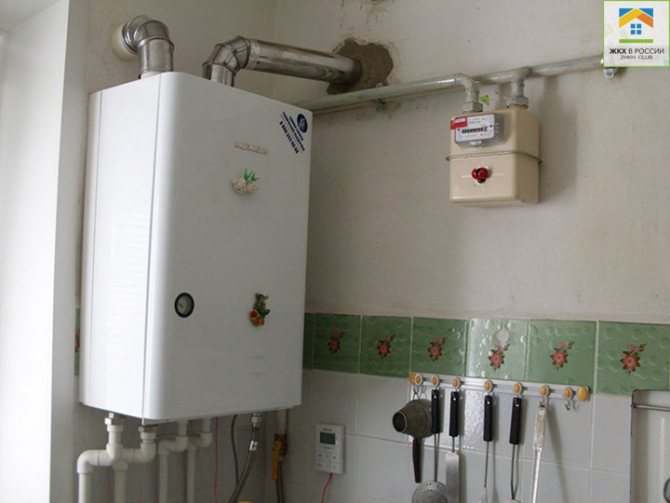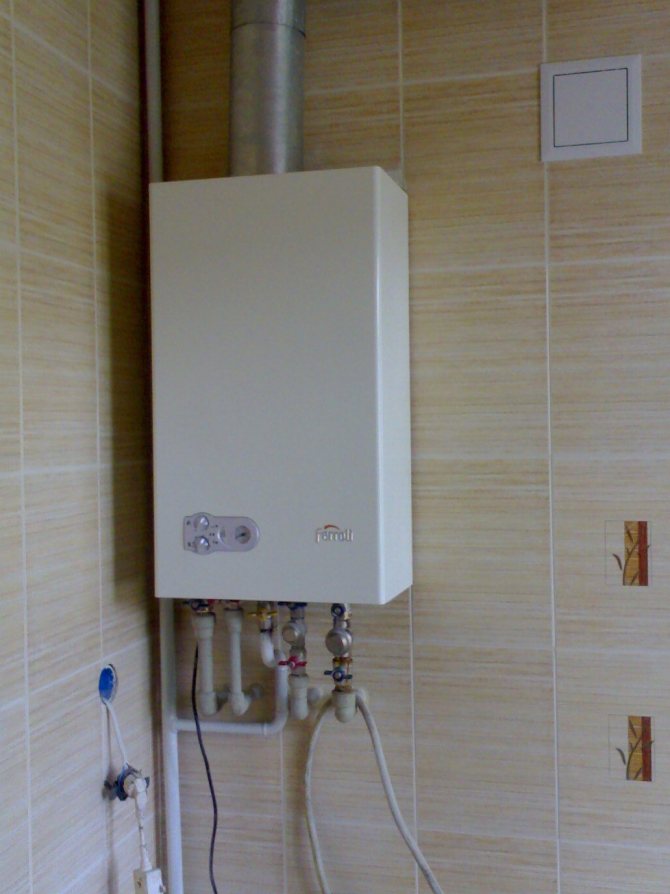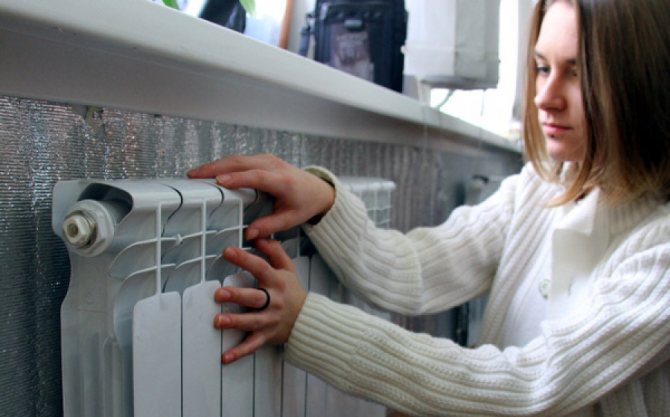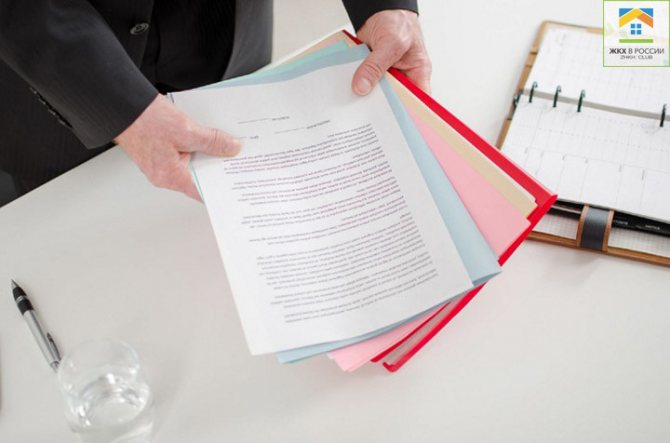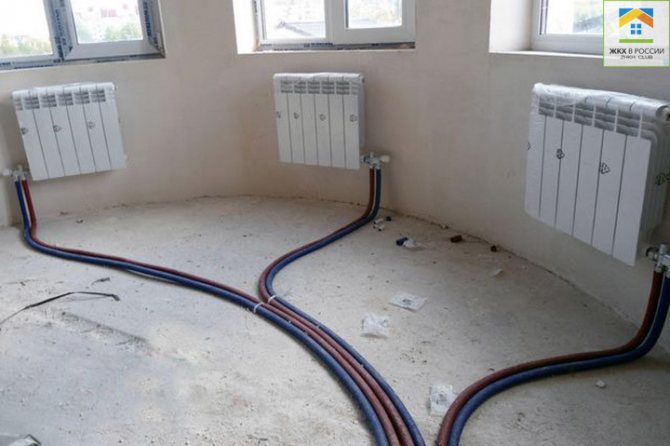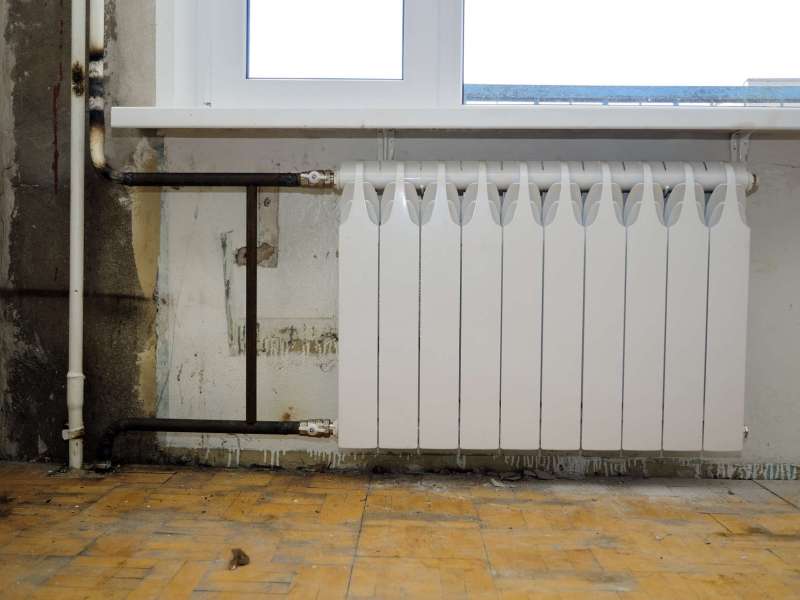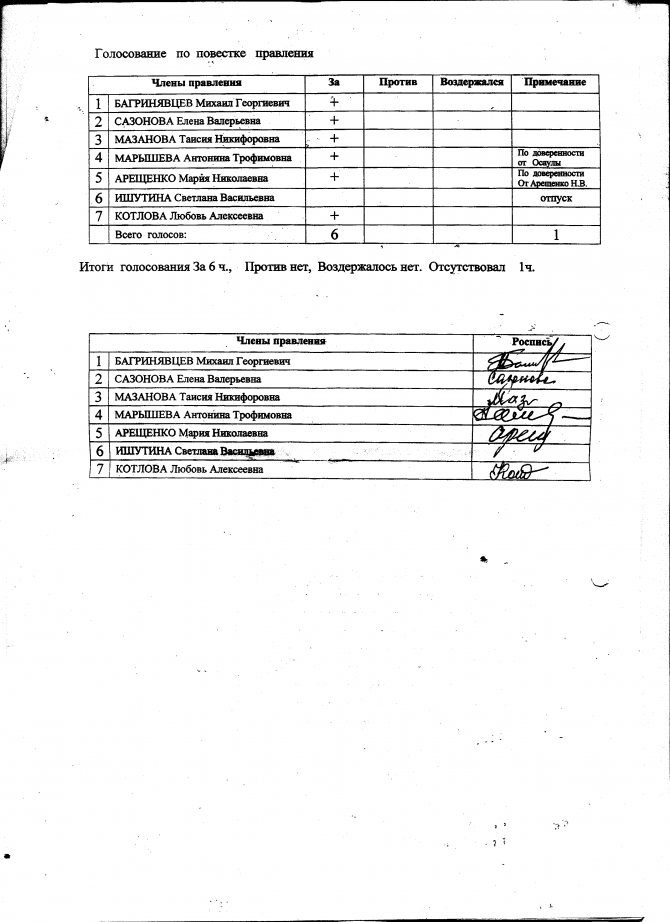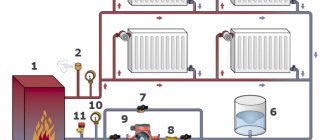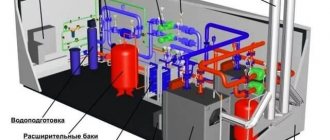The pace of life is constantly increasing, and along with it prices are rising, and citizens are trying to compensate for these losses in various ways. For example, tenants are often interested in the question of how to give up central heating in order to pay less. This is possible, but the process itself involves two stages - legal and technical.
Independent centralized heating scheme
What the legislation testifies
By all the rules, the possibility of switching to individual heating in a high-rise building is not prohibited.
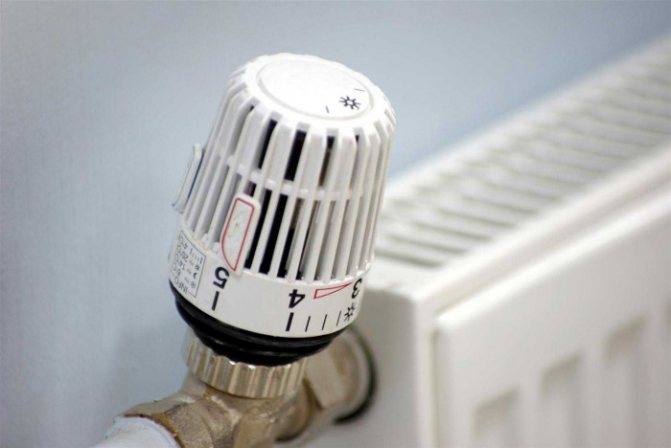
But, in order to have no complaints against the tenant who has rejected the central heating, it is necessary to resolve a number of legal issues:
- The owner of the apartment needs to draw up a written statement about the upcoming redevelopment in the heating system;
- Prepare a registration certificate for a dwelling (apartment). It is the option that the owner receives after purchasing it. Since it is on it that they will judge the possibility of switching to autonomous heating;
- Be sure to have a certificate of ownership;
- Prepare a project for reorganization;
- Obtain written consent from both adults living together with the owner and all neighbors in the entrance to the possibility of redeveloping the heating;
- Obtain consent to exit the centralized heating of the apartment from the organization responsible for the preservation of architectural monuments. If a refusal is issued from this organization, then it makes no sense to apply to other institutions;
- In cases where the owner of a dwelling in an apartment building is going to connect individual gas heating, then a permit from the gas service will also be required;
- In addition, the entire list of documents listed above with all approvals will need to be transferred to the fire brigade. They must fully study it and also give their consent.
Only upon obtaining permits from all instances can we talk about the rejection of centralized heating in an apartment building.
What do we have to do
Legal side of the issue


District heating isn't always the best
- First of all, two aspects of this issue should be distinguished - collective and individual. That is, residents of a single apartment can refuse centralized heating, but they can also ask for the termination of the services of a CHP or a central boiler house for a whole house or a riser of one entrance.
- One of the problems of private individuals is the dilemma - individual refusal from central heating of a particular apartment does not imply exemption from payment for utility services for heating an apartment, in relation to the Decree of the Government of the Russian Federation of 23.05.2006, No. The whole catch lies in the fact that the degree of provision of certain public services is determined not by the desire of the citizens living in the house, but by the level of improvement of the building, which, of course, includes heating of the apartments.
- The heating circuit of a multi-storey building, powered by a CHPP or a central boiler house, is a single whole, with a system of common risers, heating devices, valves and a common meter. If one link falls out of the general chain, then the whole chain is broken, and if part of it is removed from this link, then the whole assembly will again weaken.
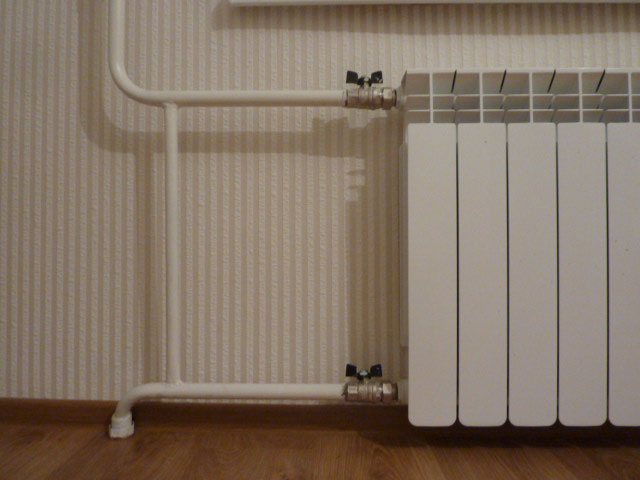

An example of a one-pipe system for connecting radiators
- Many have probably noticed that some batteries are connected through the wall, from a neighboring apartment, or vice versa - a neighbor's radiator is connected from your apartment.In this case, how to refuse heating in an apartment if this entails a system failure for your neighbors? It turns out that in order to remove one unit from the house, almost the entire circuit needs to be reorganized.
- Guided by article 36 of the LCD of the Russian Federation, the entire heating circuit, that is, risers, sun beds, radiators, and so on, are part of the property of this building. But on the other hand, the composition of such property can be determined by the owner or housing association, as well as by bodies called local government, when choosing an organization to manage the house.
- That is, if such property is defined as common, then the issue of abandoning centralized heating should be decided by a general meeting of the owners of this residential building. This is important because the disconnection of one user leads to a decrease in the entire heating system, and therefore to a decrease in this common property, which is possible only with an agreed reconstruction (article 36, part 3 of the RF LC). The above points indicate that unauthorized disconnection from the general water circuit is an illegal act.
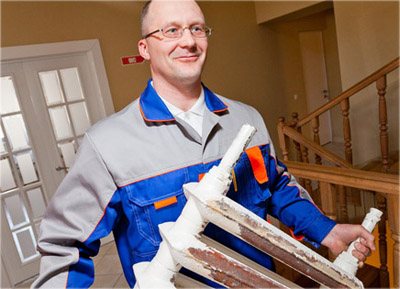

Dismantling and installation of heating must be carried out by specialists.
- But situations are possible when heating devices are not included in the joint property of this house. In such cases, an individual owner can disconnect the radiators in his apartment from the circuit (without causing damage) without the approval or coordination with the rest of the owners of the parts of the building.
- But this provision does not provide for arbitrary disconnection from the general heating circuit, but only in the order prescribed by the RF LCD. Article 25 of the Housing Code of the Russian Federation indicates that the installation or dismantling of engineering networks and structures (power supply, gasification, plumbing, heating and interior partitions) can be carried out only with the knowledge of the relevant organizations. This is justified by the fact that with such actions it is necessary to introduce changes to the system in the technical documentation.
- By order of the Ministry of Land Construction of the Russian Federation dated 04.08.1998, No. 3, the "Instruction on the construction of housing stock in the Russian Federation" was approved. It is to this document that the content and form of the technical passport of a residential building must correspond.
- Section III of the technical passport must contain a detailed description of the type of heating. Therefore, the dismantling of radiators or the installation of any equipment to compensate for the heat loss of the system is a reorganization, therefore, should be reflected in the documents.
- So, to the question of whether it is possible to abandon central heating, a laconic answer is possible - yes, this will require certain actions on the part of the owner. In accordance with article 26, part 2 of the Housing Code of the Russian Federation, you must provide a list of documents to the organization that carries out the approval. You will also have to attach a reorganization project to these documents, but if it does not meet the requirements of the law, then on the basis of Article 27, Part 1 of the RF LC, you will be refused.
About the redevelopment project
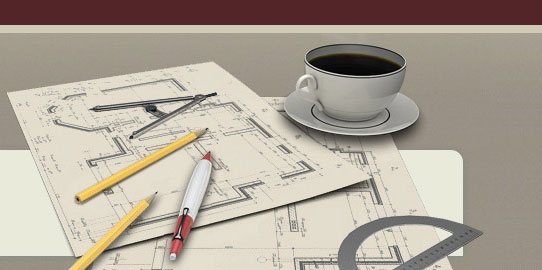

The redevelopment project must be executed in accordance with the legislation and technical parameters
- The project for the reconstruction of the heating system must comply with the permission issued to you to deviate or change the parameters of this construction. To draw up such a project, you need to make a calculation about the effect of turning off the radiators in your apartment on the system as a whole. You will also have to find out how turning off the radiators will affect the thermal-hydraulic regime of the entire building, and, of course, you need to calculate the residual heating of your rooms from the risers (sunbeds) passing through the apartment.
- In a situation where the dismantling of heating devices was recognized as possible from the technical point of view and such a project will be drawn up in an appropriate manner by a licensed organization, the instruction requires an assessment of the possible consequences of its implementation. The consequences of dismantling heating devices and the operation of other equipment by you should not allow infringement of the rights of citizens living in the neighborhood. For example, adjusting the temperature level in your apartment should not in any way affect the heating of your neighbors.
- If the consequences of the implementation of your project can affect an increase or decrease in the temperature regime on the living space of your neighbors, then this may be a reason for a negative response to your receipt of the appropriate permit. Also, one should not forget that self-government bodies can treat the signing of the document without due care, which can subsequently cause confusion with the redistribution of property.
- In the event that heating devices are part of the property of this building, their dismantling by a private person is illegal. Based on the foregoing, when asked whether it is possible to refuse heating in an apartment to one owner, the answer is no. But here concessions of local self-government bodies are not excluded.
Replacing the radiator in the heating circuit
- If residents of an entire entrance of an apartment building express a general intention to abandon centralized heating, then this can be achieved by reconstructing the general outline of the building. The decision to disconnect from the centralized heating circuit and, as a result, to change the level of improvement of the building, is adopted by voting at a general meeting of all owners of this house. The process of implementing this decision is allowed only in accordance with the norms of the legalized project.
Advice. If you want to abandon the centralized heating system, then carefully study the above rules and highlight those materials that relate to your situation. The whole process of refusal and change of the heating circuit of the house is regulated by the 4th Chapter of the RF ZhK.
The technical side of the project change
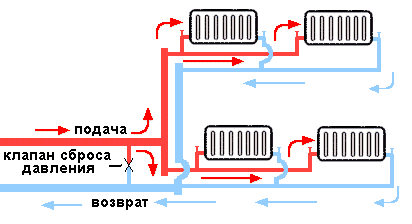

Two-pipe heating circuit
- In order to fully understand the requirements of the 4th Chapter of the RF LCD, you need to soberly assess the entire existing project and the place of your apartment in this scheme. First of all, figure out what kind of heating system you have - two-pipe (photo above) or one-pipe (photo below). In a two-pipe circuit, the supply and return of the coolant is carried out separately, parallel to the pipes.
- So, a two-pipe system can be either with an upper or a lower supply, that is, if your apartment is on the top floor, then in addition to the heating riser, a lounger will also pass through the rooms, supplying hot water. Now check how the water is supplied from it to the neighboring apartments.
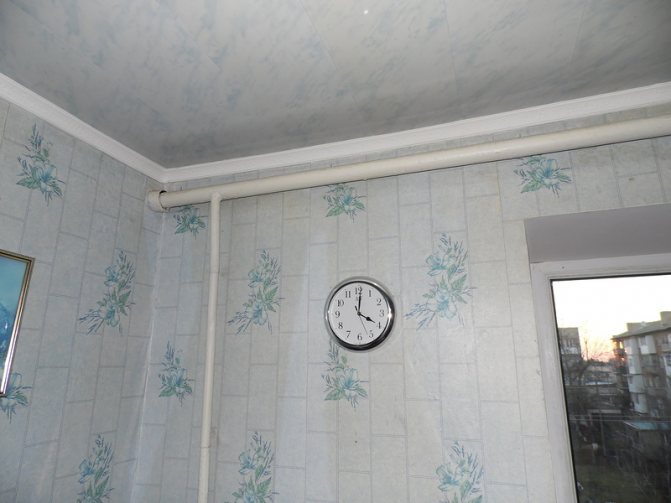

The supply sunbed runs under the ceiling of the apartment
- This photo (above) was taken on the top floor, in the kitchen in the Khrushchev, and a thin half-inch riser extending from the lounger goes down all floors to the bottom of the house. You probably understand that disconnecting the riser from the system means shutting off the water supply to the lower floors, which, of course, no one will allow you to do. In such situations, there is only one way out - to disconnect only the radiators themselves from the circuit.
Advice. When the radiators are disconnected from the water circuit in the apartment, residual heating is obtained from the risers and the lounger of the system, for which you will have to pay. But you can agree with the general meeting and, having insulated the heat-carrying pipes with mineral wool, close them with a drywall box so that they do not give off heat to you.
- In almost any case, the pipes of the common water circuit will remain in your apartment, and this will be legally regarded as residual heating. The only exceptions are those situations when the risers are mounted at the entrance, but this happens extremely rarely.
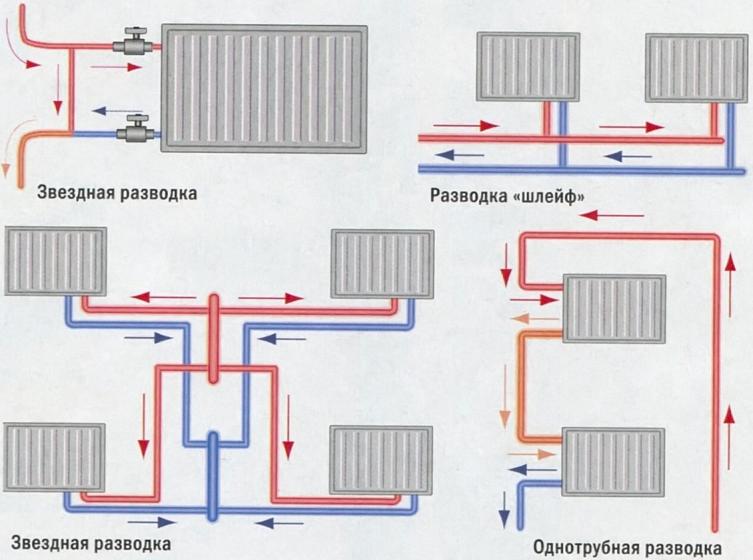

Options for one-pipe distribution of the heating water circuit
- Most often, the desire to disconnect from the centralized heating system and make autonomy with your own hands arises with various options for one-pipe radiator wiring.The bottom line is that many years of experience have shown that such options are effective for three, maximum for five radiators, and the coolant enters the rest in an already cooled state. Such a system is also known as "Leningradka", where 3-4 batteries are usually connected to one pipe.
- The disadvantages of such a circuit are that the coolant, passing through the radiator, is cooled, but after that it does not go into the return pipe, but returns back to the same water supply pipe. The situation is aggravated when the battery becomes part of the riser, that is, it is cut directly into it and is something of a filter.
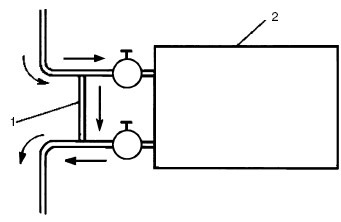

Bypass for the heating water circuit
- The seme of the circuit with a bypass looks a little different - in the figure above it is indicated by the number 1, and the radiator - by the number 2. In such cases, you simply turn off the battery, and the coolant circulates further through the bypass and here it is unlikely that any of the owners will be against your disconnection. After all, disconnecting part of the heating devices from the one-pipe water circuit entails an increase in temperature in the remaining radiators.
Advice. If the radiators are disconnected from the one-pipe system, you are better off moving the by-pass into the pipe line. This not only benefits in terms of aesthetics, but also reduces the insulation area of the element and the plasterboard box for it.
Radiator connection without bypass
- Let's go back to connecting radiators without a bypass in the heating system and look at the top figure. As you can see, turning off the radiator in this case is tantamount to a plug for the entire circuit - this method is often used in a riser that supplies a coolant to heated towel rails.
- That is, you probably understand that shutdown can only be made when the circuit is closed and here you can use two methods - electric or gas welding, or make an insert made of polypropylene, which is much more reliable and easier to perform. In addition, ecoplastic is a very poor conductor of heat, which is extremely beneficial for you in such a situation.
Advice. If you decide to abandon the centralized heating system, then you need to remember two things: firstly, whatever the price of dismantling part of the common water circuit (including the costs of legal registration), the end result will cover all your costs, at least within one or two heating seasons. Secondly, even if, at first glance, the situation seems hopeless, you can always find a compromise solution that suits both sides.
Why is it necessary to agree on a new project of the heating system?
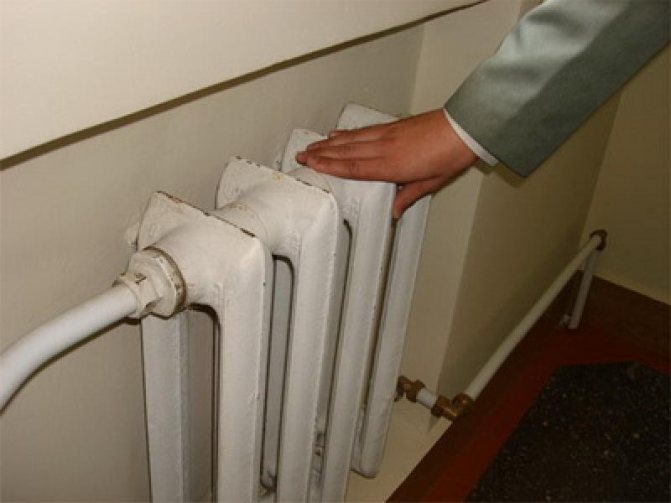

No organization will give permission to switch to individual heating without its project. It will not be possible to draw up a project on an independent basis and without an engineering education. It is best to contact a specialized institution for help.
The project must meet the following requirements:
- Show the role of a certain area (apartment) in the general heating system of the house (when switching to an individual one);
- Possibility of equipping an apartment with a heating boiler in terms of fire safety;
- Calculations for the residual elements of central heating (sun beds and risers), for which you will have to pay in the general order, despite the transition;
- Calculations of a thermohydraulic nature.
Only if all of the above calculations will fit into the permissible norms, you can give the finished project for the approval procedure. If, according to the norms, the prepared document does not correspond, then the individual will be refused.
Renovation project
This document is an extremely complex technical work that includes the following points:
- Calculations showing what effect an apartment disconnected from the general communication will have on the rest of the building.
- Calculations showing what kind of residual heating the housing will have from the risers remaining in it.
- A new type of heating system and the consequences that may appear after its installation are indicated.
If individual heating does not violate the rights of other residents, for example, to work too loudly or affect the quality of heat in their apartments, then specialists must record this.
Before you single-handedly think about how to turn off the heating in the apartment, you should interview all the residents of the entrance about the collective refusal, since in this case it is easier to obtain permission.
Is it possible to refuse central heating for residents of the entire apartment building?


Nowadays it is far from uncommon when residents in an apartment building have a desire to turn off centralized heating. Of course, it is easier for higher-level organizations to meet when this is the opinion of the majority, and not of one individual.
But you still need to know about the pitfalls that you can face. Otherwise, the refusal of the opportunity to switch to heating in an autonomous mode is provided to everyone who applies.
- It is necessary to hold an unscheduled meeting of all the owners in the apartment building and resolve the issue by voting on the possibility of all abandoning central heating. The decision must be necessarily recorded;
- The next step should be to draw up an application with a request to turn off the central heating in an apartment building, signed by all apartment owners;
- The minutes with the decision of the meeting and the application are forwarded to the local self-government body, under which a commission was created to agree on this issue. She has the right to refuse the owners of residential premises if the introduction of an autonomous mode will cause a malfunction in the work of the district heating supply. And in those cases when the work of electric and gas mains does not provide for an increase in the load;
- If the decision is positive, the commission must issue the responsible representative with a list of institutions, the technical conditions of which must be observed when drawing up the project;
- The resulting specifications should be transferred to the drafting organization;
- The completed project must be approved by each institution from the following list:
- an energy company;
- heating network;
- gorgaz;
- housing organization;
- the architectural department.
- After agreeing on the project, it must be transferred to a licensed organization that will be responsible for carrying out the work;
- After the redevelopment work is completed, they must be accepted by all the organizations listed above.
Only by joint efforts, having carried out this huge work on redevelopment of the heating system, it will be possible to save your budget in a real, and most importantly, legal way.
Documentation
Article 26 of the Housing Code states that any owner of an apartment in an apartment building has the right to disconnect from central utilities. To do this, a number of documents must be submitted to the coordinating authorities.
Required documents:
- Statement. Examples of statements of abandonment of the central means of communication can be viewed on the Internet, but mostly such documents are written in free form.
- Technical certificate. A document that describes all the characteristics based on the apartment plan.
- Housing title documents. These are documents that confirm the ownership of the apartment.
- Consent of the persons living in the apartment. It is worth considering that applications must be written in writing.
- A decision stating that the transformation can be carried out.
- Project. A separate document, which should also be attached to the general package of documents for reorganization. You cannot draw up a project yourself. This requires a qualified specialist who can accurately calculate the influence of the elements of the heating system.
In addition to the reinstallation plan, additional calculations are carried out (thermohydraulic and residual heating). If the changes show good characteristics, the project will be approved. Otherwise, in case of negative impact on other apartments, the project will not be coordinated.
You should know!
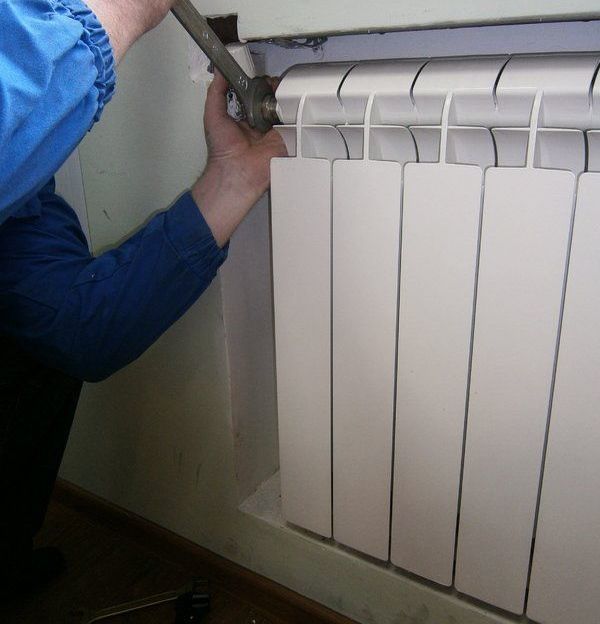

When planning to turn off centralized heating in an apartment building, you should always remember the following points:
- Discuss this opportunity with your neighbors. If there are supporters who want to make the same reconstruction in their own apartments, it will become much easier to resolve issues;
- Collect all the required documents;
- If in order to obtain permission you have to pay for the reconstruction of the heating main, think about whether the skin is worth the candle;
- Obtain a work permit;
- Purchase all the necessary equipment;
- Contact a special organization for help in carrying out the work;
- Please note that according to the adopted amendments from 2011, the transition to individual heating for one particular apartment has become practically impossible. Even when applying to the courts, not all cases are won by apartment owners. Therefore, it is best to turn off centralized heating at the request of the entire entrance or apartment building;
- Remember that for unauthorized disconnection from centralized heating, an individual is subject to a penalty established by law. In addition, all costs incurred for the renewal of district heating are also borne by the natural person who caused the damage;
- Any decision made should be good not only for one person, but also for those around him.
So, summing up all of the above, it is safe to say that it is quite possible for residents in an apartment building to refuse central heating, but only this process should proceed without violating the law.
The consumer can be exempted from paying for heating in the room if the radiators are legally dismantled
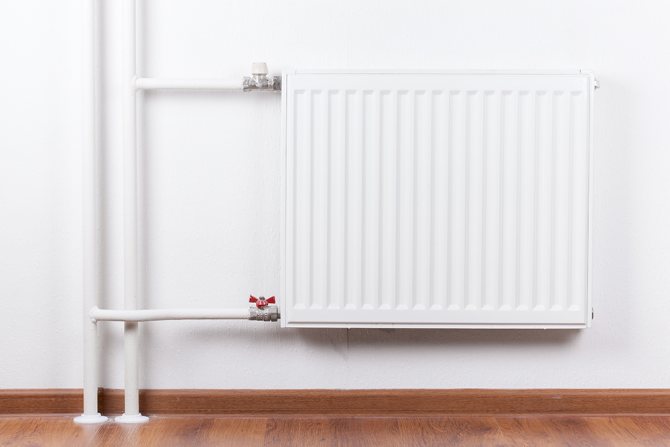

When planning to make individual heating in the apartments of an apartment building, it is necessary to weigh the material component and choose an apparatus. This is due to the fact that the equipment used in private cottages cannot be installed in the premises of the MKD.
So, the legislation prohibits the installation of solid and liquid fuel boilers in apartments. This is due to the fact that for the stable operation of equipment, a supply of fuel is needed, which is dangerous in a high-rise building.
A gas boiler
When arranging an individual heat source, the owner must think not only about his comfort, but also about the safety of other residents of a multi-storey building. Installing underfloor heating or electric heaters is legal. In all other cases, you need to get advice and assistance from technical and legal specialists.
Thus, the selection of the right equipment at the planning stage of an autonomous system is important, since the boiler determines the success of the event. Despite the requirements and a number of restrictions, there are different equipment for autonomous heating. First of all, experts recommend considering gas fuel, but here we are not talking about cylinders, but only about connecting to the mains.
The optimal equipment for individual heating is a wall-mounted double-circuit boiler, equipped with a thermostat and an electronic type of ignition. In the economy segment, such models are presented (Russia), in the premium class - Immergaz (Italy). Such a technique is capable of automatically maintaining a comfortable microclimate for a long time, providing not only heating of batteries, but also hot water supply.
Any owner, as well as a legally resident person (for example, a family member living together with the owner) has the right to request such information from the Criminal Code. In turn, the Criminal Code, by virtue of clause 34 of the Rules for the implementation of activities for the management of apartment buildings (approved no.By the Decree of the Government of the Russian Federation of May 15, 2013 No.
We invite you to read the Insulation Resistance Measurement Protocol
No. 416, hereinafter - Rules No. 416) is obliged, no later than 3 working days from the date of receipt of the request (appeal), to provide written information for the periods requested by the consumer on the monthly volumes (quantity) of utilities consumed according to the indications of collective (general) metering devices ( if any), the total volume (quantity) of the corresponding utilities consumed in residential and non-residential premises in the apartment building, the volumes (quantity) of utilities calculated using the norms for the consumption of utilities, the volume (quantity) of utilities consumed in order to maintain the total property in MKD.
How to pay less for heating
Please note! It is always necessary to pay for utilities related to heating the premises. The exception is a deviation from the norm of the temperature regime downward. For example, if the temperature in the apartment is 15 ° C or lower.
However, the owner has the ability to legally reduce the amount of utility bills.
The main thing is to determine in time if there is a thermal leak. In this case, the owner pays for the service, but does not receive high-quality heat.
Finding the cause of the heat leak
With optimal sealing of the apartment, it will not be possible to reduce the cost of utility bills, but the owner will be able to provide himself with high-quality heat. When changing double-glazed windows, the air temperature in the room increases by + 2 ... + 3 ° C.
In addition, there are special heat metering devices that the owner can install if desired. However, such thermal meters are expensive and pay off for a long time.
Additional metering devices
There is a pleasant opportunity to install special meters for each battery without violating the integrity of the device. Each equipment reflects an indicator. In the future, they are summed up and the average number is displayed for which the tenant is charged.
Such devices cost a lot. However, they will pay off in a year. Unfortunately, the majority of apartment owners prefer to pay in the old way, and only a few use the innovations.
Installation of meters is beneficial for those who are not indoors for a long time. This will allow you to legally save on payment for heating services. Upon departure, a person closes the valve, the heat stops flowing, the device records this. In the future, the owner pays for the period when he actually used the service.
Watch the video. How is it legal not to pay for heating and hot water supply:
Dear readers of our site! Our articles talk about typical methods solving legal issues, but each case is unique.
If you want to know how to solve exactly your problem - contact the online consultant form on the right. It's fast and free! Or call us on telephones:
+7-495-899-01-60
Moscow, Moscow region
+7-812-389-26-12
Saint Petersburg, Leningrad region
8-800-511-83-47
Federal number for other regions of Russia
If your question is voluminous and it is better to ask it in writing, then at the end of the article there is special form, where you can write it and we will refer your question to a lawyer specializing specifically on your problem. Write! We will help you solve your legal problem.
If you do not live in an apartment: pay or not
The owner of a private house, if he does not intend to live in it for a long time, can ask the heat supply company to suspend the provision of services. However, with apartment buildings, everything is much more complicated. After all, heat is supplied through a centralized network to each apartment. All equipment is interconnected.
Important! The heat supply company will in any case supply heat to the apartment, even if the owner does not use it.In case of his long absence, you will still have to pay for the provided service.
There is an option to reduce the cost if there is no special heat meter. This procedure is costly, dreary and risky. It is almost impossible to prove the incorrect accrual of the cost of the service.
It is impossible to convince the employees of the heat supply company that you were not at home and that you are not obliged to pay for the service. In any case, they will charge the payment in full for each day.
However, there are individuals who are eligible for compensation for utility bills. These are the recipients of the subsidies. These include pensioners, low-income families and large families, as well as other categories of beneficiaries.
It is impossible not to pay for heating during the absence of the tenant in the apartment. Besides, it is unrealistic to reduce the cost of the service. Even an attempt to heat only one battery in the apartment will not lead to the desired result. The amount is charged on the basis of the heated area, and not on the number of devices. It is impossible to prove to the employees of the heat supply company the fact of less use of the service.
Attention! Our qualified lawyers will assist you free of charge and around the clock on any issue. Find out more here.


